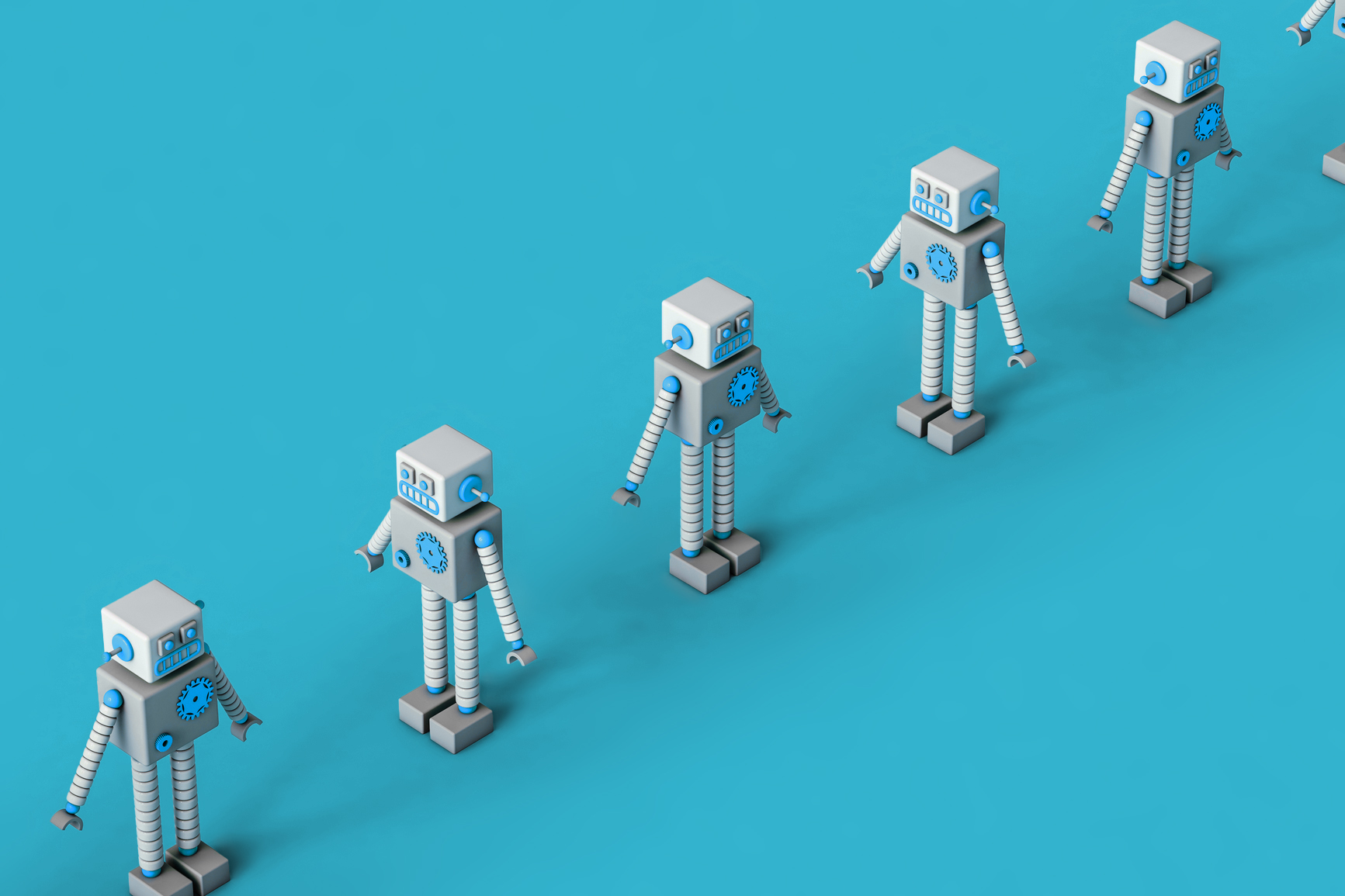Chatbots for service desks: boosting ITSM efficiency and satisfaction

In today's fast-paced world, nobody likes to be kept waiting. That's where chatbots for service desks come in. They're changing the IT Service Management (ITSM) game by providing quick, efficient, and cost-effective support with a human touch. In this blog, we'll dive into how integrating chatbots with your ITSM software can take your service desk to the next level. From automated ticketing to instant answers and 24/7 support, we'll show you how AI-powered chatbots can help your service teams provide superior and scalable IT solutions.
What is a service desk chatbot?
So, what's a service desk chatbot? Simply put, it's an AI-powered assistant that handles support tasks within your ITSM, bringing that human touch to automated help. These helpdesk chatbots can chat with users through text or even voice, just like a real person would.
Thanks to natural language processing (NLP) and machine learning, these AI chatbots understand what people are asking and can respond appropriately. They can handle service requests, answer FAQs on the spot using information from your knowledge base, manage support tickets, and if things get too tricky, they know when to bring in a human agent. This not only boosts your employee experience but also makes your service desk more efficient.
Key features of a chatbot for your service desk
What makes chatbots for your service desk so special? Chatbots are equipped with a range of features that enhance IT support efficiency and user satisfaction, including:
Automated assistance
Chatbots are always on, ready to provide instant responses anytime, day or night. No more waiting for business hours to get help!
Issue resolution
They’re plugged into your knowledge base, so they can troubleshoot and solve common problems fast, or guide users through self-service solutions.
Service requests and ticketing
Need to create or update a ticket? Chatbots can handle that, making the process smoother for both users and your IT support team. This means less manual work and more efficiency.
User interaction
Thanks to natural language processing, helpdesk chatbots communicate in a way that mimics the human touch. Plus, users can reach them through various platforms—web, mobile, or even their favorite messaging apps.
AI and machine learning
With artificial intelligence and machine learning, chatbots continuously improve. They learn from every interaction, getting better at understanding and responding to users over time.
Integration with ITSM tools
Chatbots can seamlessly integrate with your existing ITSM tools, automating repetitive tasks and streamlining workflows. This boosts overall service desk efficiency and makes life easier for your support agents.
These features combined make service desk chatbots a valuable addition to any service team looking to enhance customer service and employee experience.
Benefits of implementing a chatbot at your service desk
Adding a chatbot to your service desk can take your IT support to the next level by offering some big benefits. Chatbots boost efficiency by handling routine queries and repetitive tasks in real time, which lets your support agents focus on more complex issues; this speeds up issue resolution and lightens the load on your human agents.
They also lead to cost savings because with chatbots managing common questions and service requests, you can reduce the size of your support team or free them up for other important tasks. This not only saves money but also improves the user experience—users get instant, consistent, and personalized customer support, leading to higher satisfaction and engagement.
Plus, as your business grows, chatbots provide scalability by easily handling more support inquiries without extra cost, ensuring smooth service even during busy times. They also enhance data and insights by collecting valuable information from every interaction, helping you understand user needs, refine your processes, and anticipate future demands. In short, implementing a chatbot at your service desk can transform your service team, improve employee experience, and deliver top-notch customer service.
Use cases for service desk chatbots
Service desk chatbots aren't just for IT support—they can make a huge difference across your entire organization. Here are some ways they can help:
IT support: Chatbots can tackle technical issues by providing quick solutions and guidance on software and hardware problems. This reduces downtime and keeps everyone productive.
HR services: Got questions about policies or benefits? Chatbots can handle those employee inquiries and assist with onboarding new hires, making the process smoother and more efficient.
Customer support: Chatbots can manage customer service inquiries, providing product info and assistance. This improves the customer journey and frees up your support team to handle more complex issues.
Facilities Management: Need to report a maintenance issue? Chatbots can manage those requests and provide essential information, ensuring problems are resolved promptly.
These examples show just how adaptable chatbot service desks are. They can optimize and enhance various functions, making life easier for both your employees and customers.
Best Practices for implementing a chatbot at the service desk
To ensure your chatbot hits the service desk ground running and you get the most out of it, follow these best practices:
- Start by setting clear goals. Decide what you want your chatbot to achieve, such as improving response times, reducing your support team's workload, or boosting user satisfaction. Knowing your objectives will guide the development process.
- Choose the right technology by selecting an AI-powered solution that fits your needs, ensuring it has strong natural language processing capabilities to understand and respond to users effectively.
- Seamlessly integrate your chatbot with your existing ITSM software to guarantee smooth communication and data sharing, making workflows more efficient.
- Keep your chatbot's knowledge base up to date through continuous training, regularly updating it with new information and training it to handle new types of queries.
- Monitor and improve its performance by keeping an eye on how your chatbot is doing, collecting user feedback, and using it to refine its responses and improve accuracy.
By following these steps, you'll set your chatbot —and your support team—up for success.
Challenges and solutions
Implementing a chatbot at the service desk isn't without its hurdles, but don't worry—there are ways to overcome them.
User adoption
One of the first hurdles is getting users to actually engage with your chatbot instead of with the service desk itself. To boost adoption, make the chatbot interface friendly and easy to use, and spread the word about its benefits through internal communications. Offering training sessions can help users get familiar with how the chatbot works. By ensuring seamless and positive experiences, you'll increase user confidence and encourage them to use the chatbot regularly.
Handling complex queries
While chatbots are fantastic at dealing with routine questions, they might stumble when faced with complex issues that need a human touch. To handle this, set up a clear escalation process. Program the chatbot to recognize when a query is beyond its capabilities, so it can automatically hand the user over to a human agent who can provide the necessary expertise and resolution.
Maintaining accuracy
Keeping your chatbot's information accurate and relevant is crucial for building trust and effectiveness. Regularly update the chatbot’s knowledge base with the latest info and conduct continuous testing and refining of its algorithms. Adding feedback loops where users can report any inaccuracies helps you quickly spot and fix any issues, ensuring the chatbot remains a reliable resource.
By addressing these challenges with thoughtful strategies and ongoing improvements, organizations can optimize the performance and acceptance of their service desk chatbots.
Future trends in service desk chatbots
What's next for service desk chatbots? The future is looking bright, with some exciting trends on the horizon:
Advancements in AI and machine learning
As artificial intelligence and machine learning technologies continue to evolve, chatbots will get even smarter. They'll handle more complex queries with greater accuracy, understand context better, and learn from every interaction to keep improving.
Integration with the Internet of Things (IoT)
Imagine your chatbot interacting directly with IoT devices. Users could monitor, control, and get updates from their devices using simple conversations with the chatbot. This opens up new possibilities and expands how desk chatbots can help.
Personalization
Service desk chatbots will become more personalized, using data insights and understanding user behavior to offer tailored support. They'll anticipate user needs and preferences, making the interactions even more relevant and helpful.
These trends point to a future where chatbots are more powerful, versatile, and in tune with individual user needs than ever before.
What to take away from this blog
Chatbots for your service desk are changing the game in ITSM by providing fast, efficient, and cost-effective support. We've looked at their key features—like 24/7 assistance, handling service requests, and smooth integration with your existing tools.
The benefits are clear: increased efficiency, cost savings, happier users, and valuable insights from data. We've also explored real-world use cases, shared best practices for getting started, and offered solutions to common challenges. Looking ahead, advancements in AI, IoT integration, and personalization are set to make chatbots even more powerful and user-friendly.
Learn more about ITSM automation
Discover new ways to save time and money, while improving your customer experience. Find out which 5 IT tasks you should be automating.
Inspire others, share this blog



